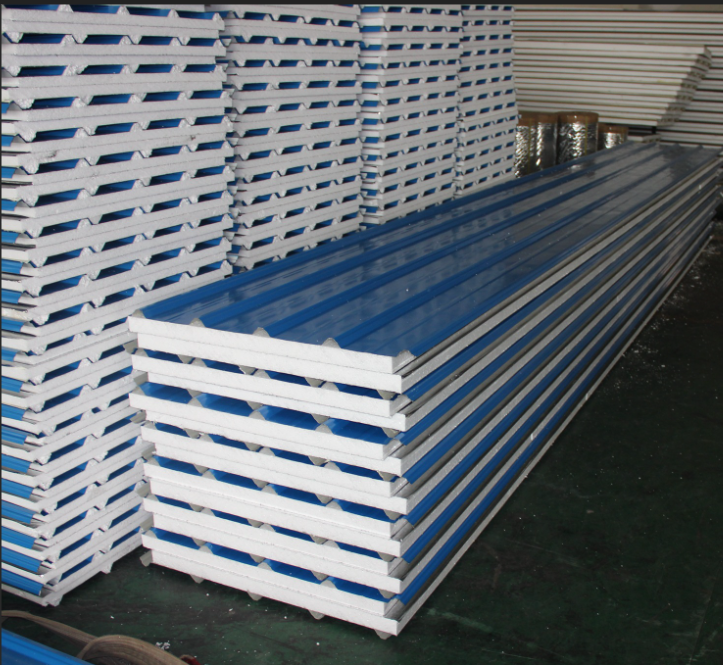Танилцуулга
Контейнер байшингуудыг дахин боловсруулсан ачааны контейнеруудыг ашиглан барьдаг бөгөөд эдгээр нь тогтвортой байдал болон бага зардлаараа алдартай. Гэвч эдгээр металл бүтэцүүдийн онцгой сорилтууд тусгаарлалтын асуудлыг хүндрүүлдэг. Контейнер байшингуудын дулаан, эрчим хүчний үр ашиг, чийгийн хяналтанд шаардлагатай зөв тусгаарлалттай байх нь чухал. Энэ нийтлэл нь контейнер байшингуудын дулаан болон дуу чимээний шаардлагад нийцсэн тусгаарлалтын хамгийн нийтлэг материалууд болон аргуудыг танилцуулж байна.
Контейнер байшингууд гэж юу вэ?
Контейнер байшингууд ихэвчлэн ган ачааны контейнероос баригддаг бөгөөд энэ нь бат бөх боловч дулаан болон хүйтнийг дамжуулах материал юм. Хэрэв зөв дулаалсангүй бол энэ дамжуулалт нь гэрт их хэмжээний температурын хэлбэлзлийг үүсгэж болно. Металл бүтэц нь конденсацид өртөмтгий бөгөөд энэ нь мөөгөнцөр, мөөгөнцрийн өсөлтөд хүргэж болно. Тиймээс, сайн дулаалалттай байх нь гэрийг амьдрахад тав тухтай, хамгийн чухал нь эрүүл байлгахын тулд чухал юм.
Түгээмэл Дулаалалтын Материалууд
Контейнер байшингуудын дулаалалд хамгийн их хэрэглэгддэг зарим материалуудыг энд дурдлаа:
Спрей Фоам Дулаалалт — Энэ нь өндөр R-үнэтэй бөгөөд битүүмжлэх чадвартай тул спрей фоам дулаалалт нь шилдэг сонголтуудын нэг юм. Энэ нь контейнерынхаа дотор талд шууд хэрэглэж, дулаалал үүсгэхийн зэрэгцээ агаар нэвтрэхгүй битүүмжлэл үүсгэж чадна.
Яг л дулаан тусгаарлах шаардлагатай газруудыг хамарсан учраас хатуу хөөс нь квадрат инч тутамд R-үнэлгээ их өгдөггүй боловч полистирол эсвэл полисатуратаас хийж болно.
Фибергласс BS Фибергласс нь бусад материалуудаас удаан хугацаанд оршин тогтнож байгаа хямд, ерөнхий дулаан тусгаарлагч шийдэл юм. Гэсэн хэдий ч, энэ нь зайгүй, эсвэл с шахалт үнэндээ үйл ажиллагааны түвшин буурна.
Минерал ноос: Минерал ноос нь хайлсан чулуу эсвэл шаар агуулдаг бөгөөд энэ нь галд тэсвэртэй, дуу чимээг шингээхэд сайн гэж үздэг. Энэ нь дулаан, дуу чимээ тусгаарлах шаардлагатай контейнер байшингийн хувьд хамгийн тохиромжтой.
Тусгаарлагч материал: Зарим бусад тусгаарлагч материалтай хослуулан ашиглахад өндөр үр дүнтэй; контейнерээс туяаны дулааныг тусгана, зэвэнд маш эмзэг.
Тусгаарлах техник
Контейнер байшинг дулаан тусгаарлах хэд хэдэн арга бий.
Ханын дулаалалт: Ханын дотор талд шууд металлд эсвэл ханууд болон дотоодын хооронд ямар нэгэн завсар үүсгэж дулаалах.
Дээвэр болон мансардын дулаалалт — Дээвэрийг дотроос (жойстын хооронд) эсвэл гаднаас дулаалж болно. Ерөнхий практик нь таазнаас дулаан алдахгүй байх үүднээс соффитын дулаалалт.
Доод хэсгийг дулаалах: Хэрвээ сав газар дээр байгаа бол шалны дулаалалт зайлшгүй шаардлагатай. Битүү хөөснөөс эсвэл бэлэн шалны доор шүршдэг хөөс ашиглан дулаан таслах боломжтой.
Цонх болон хаалга — Дулаан алдах гол цэгүүдийн нэг. Таны гэрийг дулаан байлгахын тулд давхар шилтэй эсвэл гурван давхар шилтэй цонх, дулаалсан хаалгыг ашигла.
Дулаан гүүрийг шийдвэрлэх
Термал гүүр нь дулаалгыг бага дулаалгын чадвартай материалууд дамжуулж, дулааныг дулаалгатай ханаар шууд урсгах үед тохиолддог. Контейнер байшингуудын хувьд металл skeleton нь термал гүүр болж болно. Энэ нь ханаар гадна болон дотор талд нь хатуу хөөсийн самбар зэрэг тасралтгүй дулаалгын давхарга нэмснээр бууруулж болно.
Усны түрээс
Контейнер байшингуудын хувьд чийг нь байшинд конденсаци үүсгэхгүй байхыг хянах нь чухал, учир нь энэ нь мөөгөнцрийн өсөлтөд хүргэж болно. Чийгийг уур нэвтрэх чадвартай дулаалгын материалууд эсвэл сайн байрлуулсан уурын хаалттай хянах боломжтой. Эцэст нь, сайн агааржуулалт нь конденсациас урьдчилан сэргийлэхэд тусалж чадна.
Дуу чимээ тусгаарлалт
Нөгөө талаас, ган бүтэцтэй контейнер байшингууд нь дуу чимээтэй байж болно. Дуу шингээгч материалууд, жишээлбэл, эрдэс ноос болон акустик хөөсийг дуу дамжуулалтыг намсгах болон өрөөний акустикийг сайжруулахад ашиглаж болно.
Энэ нь өөрөө суулгах эсвэл мэргэжилтнүүдийг ажилд авах
Зарим гэрийн эзэд контейнер байшингаа өөрсдөө дулаалдаг боловч мэргэжилтэн дулаалгыг зөв хэрэглэж, бүх завсруудыг битүүмжилсэн эсэхийг баталгаажуулж чадна.
Засварын арга зам ба ур чадвар
Дулаалга суулгасны дараа ихэнх засвар үйлчилгээ шаарддаггүй. Гэсэн хэдий ч, дулаалгыг элэгдэл, гэмтэлтэй эсэхийг үе үе шалгах хэрэгтэй, ялангуяа чийгтэй газруудад. хөлжилт дараах асуудлуудаас танд хамгаалж чадна.
Орчин тойрхийн хувьд авч үзэх зүйлс
Дулаалга: Дулаалга нь дахин боловсруулсан деним эсвэл целлюлоз зэрэг сонголтуудтайгаар илүү байгальд ээлтэй болж байна. Эдгээр нь бага хөлдөлттэй, байгальд ээлтэй дулаалгыг хангадаг.
Тухайн тохиолдол, жишээнүүд
Цонтейнер байшинуудад амжилттай зөхөн үйлдвэрлэлийн бодлогыг шалгаж, суралцах нь хамгийн үнэтэй. Тухайн тооллого нь ямар материалууд болон техникүүдээр амжилттай ажиллагдсаныг тодорхойлсон; морилуудад хариулах бодлогуудыг олгосон.
Дүгнэлт
Контейнерийн байшингуудыг дулаалж байхдаа материал, аргуудын сонголт нь дулааны тав тух, эрчим хүчний үр ашиг, мөн чийгийн хяналтыг хадгалахад туслах ёстой. Спрей хөөс, хатуу хөөсний самбар, шилэн шил, болон минерал ноосыг хангалттай суурилуулах практиктайгаар контейнерийн байшинд маш сайн ажилладаг. Контейнерийн байшингуудын тодорхой шаардлагуудыг ойлгож, мэдээлэлтэй дулаалгын сонголтуудыг хийснээр, гэрийн эзэд тав тухтай, эрчим хүчний үр ашигтай, тогтвортой орон зайг эдлэх боломжтой.
Гарчиг
- Танилцуулга
- Контейнер байшингууд гэж юу вэ?
- Түгээмэл Дулаалалтын Материалууд
- Тусгаарлах техник
- Дулаан гүүрийг шийдвэрлэх
- Усны түрээс
- Дуу чимээ тусгаарлалт
- Энэ нь өөрөө суулгах эсвэл мэргэжилтнүүдийг ажилд авах
- Засварын арга зам ба ур чадвар
- Орчин тойрхийн хувьд авч үзэх зүйлс
- Тухайн тохиолдол, жишээнүүд
- Дүгнэлт

 EN
EN







































